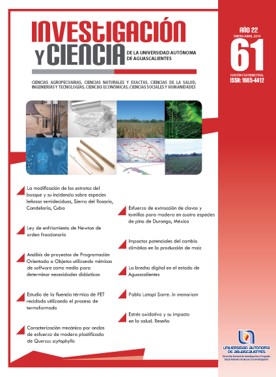Object-Oriented Programming project analysis with software metrics as a means to determine instructional needs
DOI:
https://doi.org/10.33064/iycuaa2014613651Keywords:
software metrics, object oriented programming, programming teachingAbstract
This paper presents the results of a study aimed at identifying if teaching object-oriented programming (OOP) to irregular students requires a different approach based on the characteristics of their final projects. A study of software metrics in 38 students’ projects who were divided in two groups, regular and irregular was conducted. A statistical t test was used to measure the difference of the metrics between the groups. Only the percentage of comments and the number of classes had a significant difference. The
study concludes that there is no significant difference between the characteristics of both groups, so a different approach in teaching the OOP course to irregular students is not required.
Downloads
References
• CARDELL, R. How can software metrics help novice programmers? 13th Australasian Computing Education Conference, Vol. 114, 55-62, 2011.
• CLARK, N. Evaluating student teams developing unique industry projects. Australasian Conference on Computing Education Conference, Vol. 42, 21-30, 2005.
• DURÁN, S. Puntos por Función. Una métrica estándar para establecer el tamaño del software. Boletín de política informática, XXVI(6): 41-52, 2003.
• EDWARDS, S. Using Software Testing to Move Students from Trial-and-Error to Reflection-in-Action, SIGCSE 04 Proceedings of the 35th SIGCSE Technical Symposium on Computer Science Education, 26-30, 2004. DOI: https://doi.org/10.1145/971300.971312
• FRENTIU, M., LAZA, I., y HORIA, F. On individual projects in software engineering Education. Revista Studia Univ. Babes Bolyai, Informatica, XLVIII(2): 83-94, 2003.
• GADDIS, T. Starting out with Visual C# 2012. (3a ed.). EE UU: Addison-Wesley, 2013.
• KUIPERS, T., HEITLAGER, I., y VISSER, J. A Practical Model for Measuring Maintainability. 6th International Conference on the QUATIC 07 (Quality of Information and Communications Technology), 30-39, 2007. DOI: https://doi.org/10.1109/QUATIC.2007.8
• PORKOLÁB, Z. y SILLYE, A. Comparison of Object-Oriented and Paradigm Independent Software Complexity Metrics. 6th International Conference on Applied Informatics, 435-444, 2004.
• VALDERREY, P. SPSS 17 Extracción del conocimiento a partir del análisis de datos. México: Alfaomega, 2010.
De páginas electrónicas
• CAMPWOOD. Campwood Software. De: http://www. campwoodsw.com/sourcemonitor.html, 1 jun. 2013.
Downloads
Published
How to Cite
License
Copyright (c) 2014 Ramón Ventura Roque Hernández, Juan Manuel Salinas Escandón, Adán López-Mendoza, Salvador Mota-Martínez, Oscar Flores-Rosales

This work is licensed under a Creative Commons Attribution-NonCommercial-ShareAlike 4.0 International License.
Las obras publicadas en versión electrónica de la revista están bajo la licencia Creative Commons Atribución-NoComercial-CompartirIgual 4.0 Internacional (CC BY-NC-SA 4.0)









